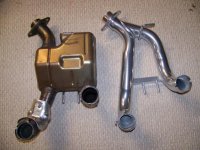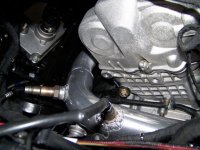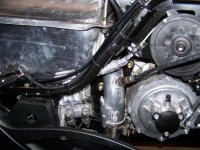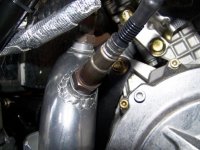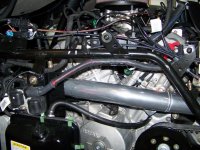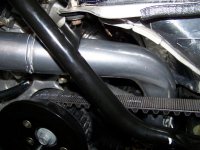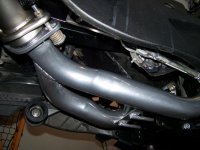stewartj239
New member
AutoTune O2 Bung Locations:
For the front header, the bung closest to the header at the very top is the OEM bung. The one closest to my hand is where I had them put the AutoTune bung. It is within the recommended 13" distance from the header and is in wide open space inside the tupperware.
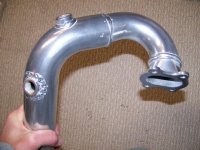
The rear header was the tricky one. The bung closest to the header is the OEM bung. The bung to the right on the down tube is the AutoTune bung. This is literally the only spot that this can go. The header is wedged between the back of the engine and the gas tank. The way they are placed, the frame rail will run between them. Notice that the AutoTune bung is turned forward because if it isn't, then you won't be able to get the bodywork put back on the bike as the O2 sensor will stick out too far.
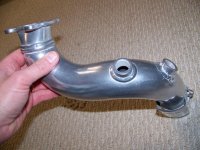
For the front header, the bung closest to the header at the very top is the OEM bung. The one closest to my hand is where I had them put the AutoTune bung. It is within the recommended 13" distance from the header and is in wide open space inside the tupperware.

The rear header was the tricky one. The bung closest to the header is the OEM bung. The bung to the right on the down tube is the AutoTune bung. This is literally the only spot that this can go. The header is wedged between the back of the engine and the gas tank. The way they are placed, the frame rail will run between them. Notice that the AutoTune bung is turned forward because if it isn't, then you won't be able to get the bodywork put back on the bike as the O2 sensor will stick out too far.


